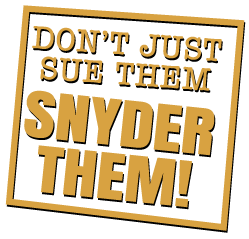
The opening and closing statements can change your case.
No matter what type of law you’re in, a trial brings a heavy workload. Through the gathering of information to the preparation and delivery, you have to be ready for anything. While you should have each point in the trial mapped out, there are times where you have to make an adjustment or two. The opening statement in a trial is like a quick synopsis of the story you’re trying to tell (because that’s what you’re doing when you speak for your client, you’re telling their story). The closing statement takes the information presented and wraps it up for the jury, and there are ways to make these two moments incredibly effective.
The Opening Statement
The opening statement is not a time for argument, but rather a time for presentation. You’re simply providing quick snapshots into what went wrong, and why your client is sitting beside you. The most important thing to do for your opening statement is prepare. Write multiple versions, and perhaps even test it on a focus group to gauge reactions. You also want to inform the jury of their responsibility, and the role they play in the case. Think of it like a movie, and you’re touching on the main plot points; the finer details of the plot will come later. It’s also important to make sure you’re concise and understandable. The worst result is for the jury to be left confused by your argument, which is why you want to make sure your language is simple and clear. Finally, don’t ignore any potential weaknesses in your case. The jury makes the final decision, so you want to build a strong, trustworthy foundation with them.
The Closing Statement
The closing statement is glorified in popular culture as the moment that changes everything, which isn’t necessarily true, but it can definitely make an impact. With the closing statement, you’re trying to sum everything up, and leave a lasting impression on the jury. You want to discuss with the jury how they should properly use the information presented to them. This is the final chapter of the story you’re telling, so try to highlight your points while simultaneously debunking your opposition. Connect back to your opening statement to come full circle, and essentially repeat why your case holds. You always want to appear convincing, but it’s okay to show a little more passion during this portion. The facts and how they’re interpreted will always speak, but you can influence the final interpretation here.
Need Representation For Your Claim? Call 410-THE-FIRM Today!
The Snyder Law Group, LLC, proudly represents clients throughout Maryland and Washington, D.C. Our experienced Baltimore attorneys understand the frustration that comes with an insurance company, medical professional, or other party that refuses to accept liability for negligent or reckless behavior. You can take heart in knowing there are talented and experienced lawyers ready to work for you. We are experienced in handling personal injury claims of medical malpractice or injury resulting from serious car and truck accidents, and have secured hundreds of millions in verdicts settlements*. Please visit our website, www.410thefirm.com, for more information and follow us on Facebook, Twitter, Google +, and LinkedIn.
